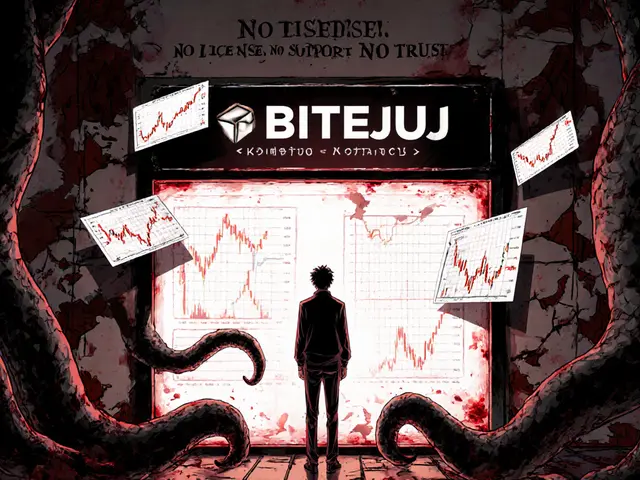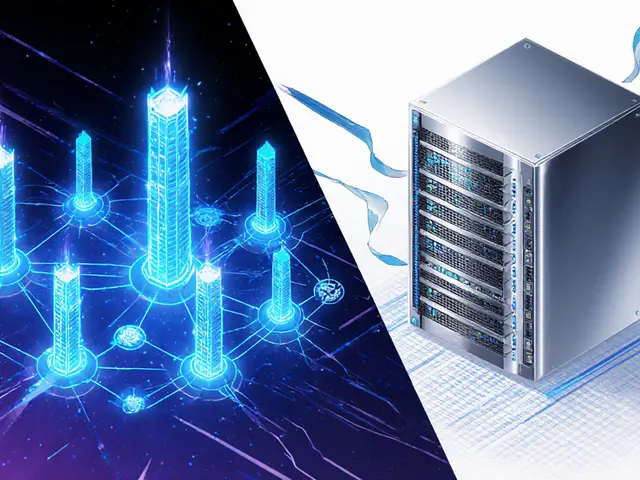DeFi Composability Risk Calculator
Evaluate Your DeFi Stack
Enter details about your DeFi composition to calculate risk exposure:
Risk Assessment Results
Ever wonder why new crypto apps seem to appear overnight, offering everything from instant loans to automated yield strategies? The secret sauce is DeFi composability - the ability for decentralized finance building blocks to snap together like Lego bricks, creating fresh financial services without asking for permission.
What exactly is DeFi composability?
At its core, DeFi composability is a design principle that lets independent blockchain protocols interact directly through open code. No middle‑man, no gate‑keeper, just smart contracts calling each other’s functions. Think of it as a digital open‑source marketplace where a lending contract can pull price data from a decentralized exchange (DEX) and instantly trigger a flash loan.
The building blocks that make it possible
Three technical pieces keep the whole system humming:
- Smart contracts act as self‑executing agreements, encoding rules that all parties must follow. Because the code lives on-chain, anyone can read, verify, and reuse it.
- Standard token interfaces like ERC‑20 (fungible) and ERC‑721 (non‑fungible) guarantee that assets move smoothly between protocols.
- Open APIs and SDKs give developers ready‑made libraries to connect wallets, fetch on‑chain data, and call contract functions without writing everything from scratch.
Why composability matters for users
When protocols can talk to each other, users win in three concrete ways:
- Capital efficiency. A single transaction can borrow, swap, and repay assets across multiple platforms, cutting the need for separate steps and dramatically lowering gas fees.
- Speed. By chaining actions inside one atomic block, traders execute strategies in milliseconds - a critical edge in volatile markets.
- Customization. Power users can mix a lending protocol, a DEX, and a yield farm to build a personal risk‑return profile that traditional banks could never match.

Innovation: New products born from composability
Here are two of the most talked‑about inventions that rely on this modular approach:
- Yield farming - Users deposit assets into a liquidity pool, earn a token reward, then instantly feed that reward into another protocol to compound returns. The whole loop runs in one transaction.
- Flash loans - Borrowers take out a massive, uncollateralized loan, execute an arbitrage or liquidation strategy, and repay the loan-all within the same block. If any step fails, the transaction reverts, protecting the lender.
Because each component is openly reusable, developers can prototype complex strategies in days rather than months. A new “insurance‑as‑code” product, for example, might blend a price‑oracle, a staking contract, and a liquidation module-all existing pieces.
Risk management: The flip side of openness
Composability also amplifies risk. If a single contract has a bug, every protocol that calls it can be pulled into the failure. This systemic exposure shows up most clearly in two ways:
- Cascading bugs. A vulnerability in a popular stablecoin contract can freeze liquidity across dozens of farms that rely on it.
- Audit dependency. Users must trust not only the protocol they interact with directly, but also every downstream contract it calls. A thorough security audit becomes a prerequisite for any composable product.
On the bright side, the transparent nature of smart contracts lets anyone inspect code, run simulations, and verify risk metrics before committing capital - a level of clarity rarely found in traditional finance.
Real‑world examples of composable DeFi
Several live projects illustrate the power of this approach:
- Aave (lending) + Uniswap (DEX) - Users borrow assets from Aave, swap on Uniswap, and instantly repay, enabling leveraged yield farming.
- Compound + MakerDAO - Borrowers can take a loan on Compound, use the stablecoins as collateral in Maker, and generate DAI without ever moving funds off‑chain.
- Balancer (multi‑token pool) + Yearn Finance - Balancer supplies liquidity, while Yearn automatically routes earnings to the highest‑yielding farm.
Each case shows how a developer only needs to write a thin “glue” contract to orchestrate the flow, leveraging the robustness of existing protocols.

Developer checklist for safe composable design
Before you mash together your next DeFi masterpiece, run through this quick list:
- Verify that every external contract is audited and has a solid upgrade‑delay or multisig governance.
- Use interface contracts (ERC‑20, ERC‑721) that match the exact version of the token you’ll interact with.
- Write unit tests that simulate failure of any downstream call - ensure your main transaction reverts cleanly.
- Deploy on a testnet first; monitor gas usage and potential re‑entrancy vectors.
- Document the full call graph so users can assess exposure before using your product.
Composable vs. monolithic DeFi stacks
| Aspect | Composable (modular) | Monolithic (single‑stack) |
|---|---|---|
| Innovation speed | Fast - developers reuse existing contracts | Slower - each feature built from scratch |
| Capital efficiency | High - single atomic transactions combine actions | Medium - multiple on‑chain steps needed |
| Risk exposure | Systemic - bugs can cascade across protocols | Contained - failure stays within one codebase |
| Gas cost | Optimized - fewer separate calls | Higher - redundant operations |
| User control | Granular - mix‑and‑match components | Limited - fixed feature set |
Choosing the right architecture depends on your risk tolerance and time‑to‑market goals. Most innovators start composable, then gradually harden critical pathways with custom safeguards.
Future outlook: composability in 2026 and beyond
Analysts predict that as the $100‑plusbillion DeFi market matures, composable frameworks will become the default. Expect more cross‑chain bridges, standardized oracle contracts, and automated audit pipelines that reduce systemic risk without throttling creativity. The balance between rapid product rollout and rigorous security will define which platforms dominate the next wave.
Frequently Asked Questions
What does “composable” actually mean in DeFi?
It refers to the ability of separate smart contracts and token standards to interact directly, allowing developers to combine existing modules into new financial services without needing permission.
How does composability reduce gas fees?
When several actions (borrow, swap, repay) are bundled into one atomic transaction, the blockchain processes a single set of signatures and state updates, cutting the cumulative gas cost of separate calls.
Are flash loans safe for everyday users?
Flash loans are powerful but risky. They require precise, error‑free code because any failure reverts the whole transaction, potentially leaving users with lost gas and no profit.
What should I check before using a composable product?
Look at the audit reports of each underlying contract, verify that the code matches the documented interfaces, and understand how a failure in one component could affect the whole workflow.
Will regulators affect composable DeFi?
Regulators are still catching up, but any rules that target systemic risk-like requiring capital buffers or audit certifications-could indirectly shape how developers design composable architectures.








Eva Lee
March 2, 2025 AT 14:33Yo, the composability hype is basically a liquidity superhighway where each protocol acts like a micro‑service API, slashing friction and enabling atomic swaps. When you stack three contracts you’re basically creating a layered DAG of trust‑less interactions. The risk calculus should factor in recursive call depth and re‑entrancy vectors – the more layers, the larger the attack surface. In short, DeFi composability is a double‑edged sword, but the upside is undeniable.
Patrick MANCLIÈRE
March 7, 2025 AT 23:17What’s fascinating about DeFi composability is how it mirrors the Open‑Source ethos – everyone can plug‑in their modules and build on top of existing primitives. By leveraging audited libraries you reduce redundant code, and the community can focus on novel economic designs. The calculator in the post is a neat way to surface hidden exposure before you get zapped. Just remember that thorough audit trails and on‑chain governance can mitigate many of the systemic risks. Keep experimenting, but stay vigilant.
Ciaran Byrne
March 13, 2025 AT 08:00Good points, Patrick. A concise reminder: risk grows non‑linearly with added inter‑protocol calls.
Greer Pitts
March 18, 2025 AT 16:44Honestly, I think most users underestimate how a single buggy contract can cascade through the whole stack. I’ve seen flash‑loan attacks that bounce off three different protocols before the exploit is even noticed. It’s like a house of cards – one loose card and the whole thing collapses. So, always double‑check the audit reports and run your own smoke tests.
Lurline Wiese
March 24, 2025 AT 01:28Wow, that’s drama queen level when a DeFi protocol fails – total chaos! But yeah, the hype can blind us.
Adarsh Menon
March 29, 2025 AT 10:11Oh great another risk calculator, because we needed more spreadsheets. it’s like saying ‘don’t trust the bank, trust the spreadsheet’ lol. but i guess if you’re into numbers, go for it.
Promise Usoh
April 3, 2025 AT 18:55From a philosophical perspective, composability represents the emergent property of decentralized finance, wherein the sum transcends its parts. However, each additional protocol introduces a marginal probability of systemic failure, an entropy that must be accounted for in any rigorous risk model. Therefore, the calculator should be complemented by qualitative governance reviews.
Shaian Rawlins
April 9, 2025 AT 03:39DeFi composability is truly a paradigm shift that democratizes financial engineering, allowing hobbyists and seasoned developers alike to assemble sophisticated financial products with relative ease. By reusing existing smart contracts, we reduce development time and foster interoperability, which in turn fuels liquidity aggregation across markets. Yet, with every added layer comes an amplification of potential vulnerabilities – a concept akin to building a tower of Legos where each piece must be perfectly aligned. The risk calculator highlighted in the article serves as a valuable heuristic, but it should be viewed as a starting point rather than a definitive audit. Users ought to conduct thorough due diligence, including reading audit reports, monitoring on‑chain metrics, and stress‑testing their strategies under adverse market conditions. Moreover, community governance can act as an additional safeguard, providing real‑time oversight and rapid response mechanisms. In essence, while composability supercharges innovation, responsible stacking is essential to preserve the integrity of the ecosystem.
Tyrone Tubero
April 14, 2025 AT 12:22Okay, but let’s not get all poetic about it. The calculator is cool, but real‑world testing will expose the bugs that no audit can catch.
Miranda Co
April 19, 2025 AT 21:06Risk calculators are just a safety net, not a guarantee.
Scott McReynolds
April 25, 2025 AT 05:50Hey folks, I totally vibe with the idea that composability is the engine driving DeFi’s growth. When you think about it, each protocol is like a LEGO brick – the more bricks you have, the more creative structures you can build. Of course, that also means you need a solid foundation; otherwise the whole thing could tumble. That’s why I love tools that give you a quick risk snapshot before you dive in. It’s like checking the weather before a hike – you might still get caught in a storm, but at least you’re prepared. Keep stacking, but keep your helmets on!
John Corey Turner
April 30, 2025 AT 14:33DeFi composability is essentially the principle that allows independent smart contracts to interoperate, forming a modular financial ecosystem. Think of each protocol as a micro‑service exposing a set of functions that other services can call, much like APIs in traditional software. This modularity fuels rapid innovation because developers can focus on niche functionalities without reinventing the wheel. For example, a lending platform can integrate an oracle for price feeds, a stablecoin for collateral, and a yield optimizer, all by wiring together existing contracts. The synergy created by such stacks often produces emergent behavior, delivering higher liquidity and more efficient capital allocation. However, each additional connection introduces a new surface for potential exploits, such as re‑entrancy attacks or oracle manipulation. When a flash‑loan actor identifies a vulnerability in one component, they can chain it across multiple protocols to amplify profits. That cascade effect is precisely why composability can be a double‑edged sword. The risk calculator presented in the article attempts to quantify that exposure by considering protocol count, complexity, and audit status. While the formula is simplistic, it serves as a useful heuristic for casual users. Advanced participants should supplement it with on‑chain analytics, stress testing, and thorough code audits. Moreover, governance frameworks can provide real‑time oversight, allowing the community to pause or upgrade vulnerable components. In practice, successful composable strategies often involve staggered deployment, where each layer is incrementally added and monitored. This approach mitigates systemic risk while preserving the benefits of modular design. Ultimately, the power of composability lies in its ability to democratize financial engineering, but it must be wielded with disciplined risk management.
Katherine Sparks
May 5, 2025 AT 23:17I appreciate the thorough breakdown, John. It’s important to pair quantitative tools with community governance and continuous monitoring. Together they create a resilient safety net for composable finance.
Kimberly Kempken
May 11, 2025 AT 08:00Honestly, all this hype about composability is just a buzzword parade to distract from the fact that most users are clueless about the underlying risks.
Brooklyn O'Neill
May 16, 2025 AT 16:44I hear you, Kimberly, but I think highlighting risks helps newcomers stay cautious.
Jenise Williams-Green
May 22, 2025 AT 01:28Drama aside, the calculator is a neat piece of tech.
Laurie Kathiari
May 27, 2025 AT 10:11Sure, it's handy, but remember the color of the UI doesn’t fix fundamental vulnerabilities.
Matt Nguyen
June 1, 2025 AT 18:55One must consider that every new composable layer could be a conduit for hidden backdoors, especially when the auditors are not transparent. The paranoia is warranted; we should demand open‑source verification and community scrutiny before trusting any stack.
Cynthia Rice
June 7, 2025 AT 03:39Exactly, Matt. Concise and to the point.
Natalie Rawley
June 12, 2025 AT 12:22Everyone loves the hype, but the reality is that most of these tools are built on shaky assumptions.
Carthach Ó Maonaigh
June 17, 2025 AT 21:06True, Natalie. The colorful language often masks the lack of real security testing. It’s time we cut the fluff and focus on hard data.
Kortney Williams
June 23, 2025 AT 05:49From a more introspective angle, the philosophical allure of composability mirrors the human desire for modularity in life – we seek to assemble experiences like building blocks. Yet we must remain aware that each block carries its own weight, and piling them without reflection can lead to imbalances.
Rob Watts
June 28, 2025 AT 14:33Totally agree. Keep it simple and test often.